![]()
![]()
![]()
Use LEFT and RIGHT arrow keys to navigate between flashcards;
Use UP and DOWN arrow keys to flip the card;
H to show hint;
A reads text to speech;
81 Cards in this Set
- Front
- Back
|
Moon phase for a solar eclipse.
|
NEW MOON
|
|
|
Moon phase for a lunar eclipse.
|
FULL MOON
|
|
|
Moon phase when the Moon is entirely lit.
|
FULL MOON
|
|
|
Moon phase when only a small sliver of the Moon is lit.
|
CRESCENT
|
|
|
Moon phase when only a small sliver of the Moon is in shadow.
|
GIBBOUS
|
|
|
Phases between a New Moon and Full Moon.
|
WAXING
|
|
|
Moon phase when exactly half of the Moon appears lit.
|
QUARTER MOON
|
|
|
Phases between a Full Moon and New Moon.
|
WANING
|
|
|
Reason why we see phases of the Moon from Earth.
|
ANGLE CHANGES DUE TO MOON'S REVOLUTION
|
|
|
Approximately how long does each phase last
|
3.65 days
|
|
|
How much of the Moon is lit at any time?
|
HALF
|
|
|
What creates the Moon's light?
|
SUN
|
|
|
How much of Earth is lit at any time?
|
HALF
|
|
|
What creates Earth's light?
|
SUN
|
|
|
Moon phase for a solar eclipse.
|
NEW MOON
|
|
|
Moon phase during a lunar eclipse.
|
FULL MOON
|
|
|
For a total solar eclipse, what must be the relative distance between the Earth and Moon?
|
CLOSER
|
|
|
3 requirements for an eclipse
|
1) correct phase
2) correct plane (angle) of orbit 3) correct distance |
|
|
Region around Earth where charged particles from solar wind are trapped.
|
MAGNETOSPHERE (VAN ALLEN BELTS)
|
|
|
Formed when charges particles escape the magnetosphere.
|
AURORAS
|
|
|
Celestial body having the greatest affect on Earth's tides.
|
MOON
|
|
|
Cause of High and Low Tides.
|
EARTH ROTATES, CHANGING THE APPARENT POSITION OF THE MOON AND THEREFORE THE MOON'S GRAVITY
|
|
|
Moon phase during spring tides
|
NEW MOON or FULL MOON
|
|
|
Moon phase during neap tides
|
QUARTER MOONS
|
|
|
Monthly tides that have higher than normal highs and lower than normal lows.
|
SPRING TIDES
|
|
|
Monthly tides that have less variation between high and low tides.
|
NEAP TIDES
|
|
|
Approximate time to complete one tide cycle (in Oregon, 2 high tides and 2 low tides).
|
24 hours
|
|
|
Darker shadow during an eclipse.
|
UMBRA
|
|
|
Lighter shadow during an eclipse.
|
PENUMBRA
|
|
|
Eclipse seen during the day
|
SOLAR
|
|
|
Eclipse seen at night.
|
LUNAR
|
|
|
Eclipse caused by Earth's shadow.
|
LUNAR
|
|
|
Eclipse caused by Moon's shadow.
|
SOLAR
|
|
|
Eclipse when a shadow falls on Earth.
|
SOLAR
|
|
|
Eclipse when a shadow falls on the Moon.
|
LUNAR
|
|
|
How many times each month will there be a spring tide?
|
2
|
|
|
How many times each month will there be a neap tide?
|
2
|
|
|
FIRST QUARTER
|

What phase?
|
|
|
FULL MOON
|

What phase?
|
|
|
WAXING GIBBOUS
|

What phase?
|
|
|
LAST QUARTER
|

What phase?
|
|
|
WANING CRESCENT
|
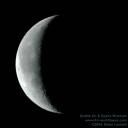
What phase?
|
|
|
WANING GIBBOUS
|
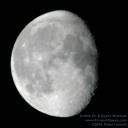
What phase?
|
|
|
WAXING CRESCENT or FIRST CRESCENT
|
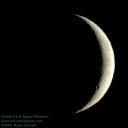
What phase?
|
|
|
What moon phase is "invisible"?
|
NEW MOON
|
|
|
SOLAR
|

What type of eclipse?
|
|
|
LUNAR
|
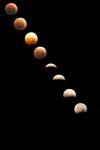
What type of eclipse?
|
|
|
SOLAR
|

What type of eclipse?
|
|
|
SOLAR
|
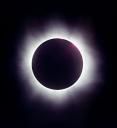
What type of eclipse?
|
|
|
LUNAR
|

What type of eclipse?
|
|
|
Why the Sun doesn't have a greater effect on tides
|
TOO FAR AWAY
|
|
|
phase that is fully visible
|
FULL MOON
|
|
|
when Earth is closest to the Sun
|
DECEMBER/JANUARY
|
|
|
day of the year when the noonday Sun is highest on the horizon
|
SUMMER SOLSTICE
|
|
|
day of the year when the noonday Sun is lowest on the horizon
|
WINTER SOLSTICE
|
|
|
body creating a shadow in a lunar eclipse
|
EARTH
|
|
|
body creating a shadow in a solar eclipse
|
MOON
|
|
|
occurs when the Earth passes between the Sun and Moon
|
LUNAR ECLIPSE
|
|
|
occurs when the Moon passes between the Sun and Earth
|
SOLAR ECLIPSE
|
|
|
the days when there is equal amounts of light and dark
|
EQUINOXES
|
|
|
time of the summer solstice
|
JUNE 21
|
|
|
time of the winter solstice
|
DECEMBER 21
|
|
|
time of the spring equinox
|
MARCH 22
|
|
|
time of the fall equinox
|
SEPTEMBER 22
|
|
|
another name for spring equinox
|
VERNAL EQUINOX
|
|
|
another name for fall equinox
|
AUTUMNAL
|
|
|
position of Earth during equinoxes
|
NEITHER POLE IS POINTING DIRECTLY TOWARD OR AWAY FROM SUN
|
|
|
position of Earth during summer solstice
|
NORTHERN HEMISPHERE IS POINTING TOWARD SUN
|
|
|
position of Earth during winter solstice
|
SOUTHERN HEMISPHERE IS POINTING TOWARD THE SUN
|
|
|
compare seasonal patterns in northern and southern hemispheres
|
OPPOSITE
|
|
|
one rotation of Earth
|
DAY (24 HOURS)
|
|
|
shape of orbits
|
ELLIPTICAL
|
|
|
furthest point in orbit
|
APHELION
|
|
|
alternate rise and fall of oceans and seas
|
TIDES
|
|
|
total or partial obscuring of one body by another
|
ECLIPSE
|
|
|
why we see the same side of the Moon from Earth
|
MOON'S ROTATION = MOON'S REVOLUTION
|
|
|
closest point in orbit
|
PERIHELION
|
|
|
the closest point in the Moon's orbit
|
PERIGEE
|
|
|
the furthest point in the Moon's orbit
|
APIGEE
|
|
|
turn around an axis within the body
|
ROTATION
|
|
|
turn around an axis outside the body
|
REVOLUTION
|

